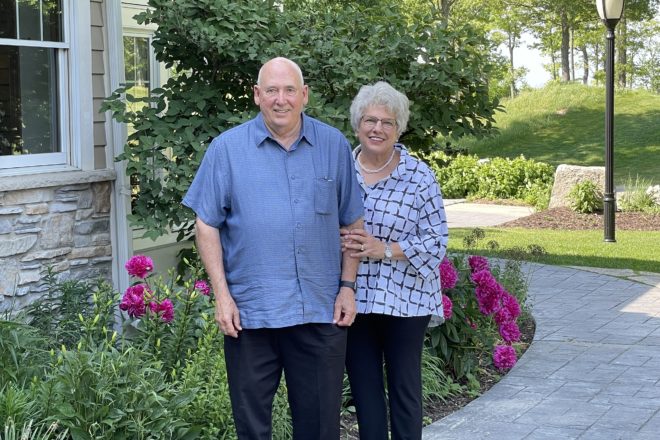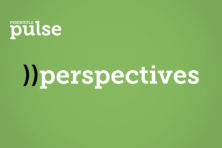Pulse of Philanthropy: Enriching Ourselves through Giving
- Share
- Tweet
- Pin
- Share

by BRET BICOY, President and CEO, Door County Community Foundation
The whole business model of banking is that when you send money out, you’re supposed to bring even more money back in. A loss is precisely what the banker is trying to avoid.
Thus, it’s a bit ironic that the Door County Community Foundation has honored Tom and Jill Herlache, members of Door County’s most iconic banking family, as the 2022 Philanthropists of the Year. Bankers don’t like losses, and economists argue that central to any form of giving is loss.
Economists tell us that when you give away your resources, you’re not just losing those assets, but you’re also paying an opportunity cost. You lose the goods, services, experiences and even the adventures that might have been possible had you not given away your time and money.
If bankers could somehow distill the entirety of our lives into a statement of activities and a balance sheet, then giving away our valuable dollars and precious hours should balance out as a relative deficit.
Yet Tom and Jill Herlache are living examples of the “paradox of generosity.” It’s this beautiful idea that on the financial statements of life, the deficit that results as we give more of ourselves away is wiped clean and ultimately results in a richer balance sheet than we ever could have achieved, had we kept everything for ourselves.
Many correlations between practices of generosity and positive life benefits have been documented. For example, volunteers tend to enjoy a greater breadth and depth of friendships. Similarly, donors who include a charitable gift in their estate plans tend to live longer. There are so many correlations between generosity and desired life outcomes that researchers refer to them collectively as the “warm glow” effect.
Two sociologists from the University of Notre Dame set out to determine whether there might be a causal effect behind all of these correlations. Christian Smith and Hilary Davidson’s Science of Generosity Initiative is the first research to apply cutting-edge empirical data-collection techniques to examine the link between generosity and positive personal life outcomes in a five-year, multidisciplinary study.
“Far from being a draining cost that leaves the generous giver at a net loss, practicing generosity for the good of others actually tends to enrich the lives of the givers in ways that are of fundamental human value,” Smith and Davidson wrote. “Rather than leaving generous people on the short end of an unequal bargain, practices of generosity are instead likely to provide generous givers with essential goods in life – happiness, health and purpose – which money and time themselves simply cannot buy.”
The researchers identify nine interrelated mechanisms (which I’ll write about in a future column) that demonstrate a causal link between generosity and positive outcomes.
“These nine causal mechanisms, and perhaps others, help to explain why it is that more generous people tend to be significantly more happy, healthy and purposive people.” They go on to note that “in many ways and for many reasons, generous practices can indeed significantly improve the happiness, health and sense of purpose in life of those who practice it. That is a scientific fact that is worth knowing and appreciating.”
Yet perhaps what I love most about this research is that it’s not dependent on the dollar value of our gifts. What the study concludes is truly important is the spirit in which we approach our generosity. Although Smith and Davidson show us ways in which we can learn to be more generous, our generosity must become authentic if we are to enjoy its life-enhancing benefits. In other words, our giving must become part of who we are.
Tom Herlache was a longtime member of the Rotary Club of Sturgeon Bay, whose mantra is “Service above self.” It was through Tom’s volunteerism that he met Jill. Then she became a Rotarian as well. Because of their shared desire to give back, they found each other and received something far greater than their time or money could ever buy. That spirit of generosity then became the foundation for the entirety of their life together.
Thus, it’s most appropriate that the Door County Community Foundation is honoring a couple so intimately tied to banking. The business model of banking is that when you send something out, you’re supposed to bring even more of it back in, and that’s what the Herlaches do. On the banker’s balance sheet of life, Tom and Jill are living examples of the paradox of generosity: The more we give of ourselves and our resources, the richer our lives become.
Contact Bicoy at [email protected].

